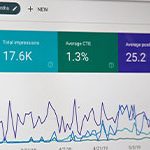The first step to kick-start your digital marketing career is understanding SEO. Content writers need to realize content needs to have a market value. If the product description you wrote is not helping readers or the company, what purpose does it serve?
While original content always stands apart, when you comply with SEO norms, it appears higher in SERPs (search engine results pages). This is extremely helpful if you are handling a blog or web page. That is because a higher page ranking directly transforms into higher customer interaction. When your customers interact with you, it means a profit in business.
SEO is not a tough thing to understand. All you need to do is get into the shoes of the customers. What attracts you to a write-up? What makes you leave an article in the midway? Once you get hold of all these, you master the art of SEO.
New blog handlers take a long time to understand the basics. This keeps their blog away from people’s attention. So, we have prepared a gist of SEO and the sure-shot ways to get higher rankings.

What is SEO?
SEO stands for search engine optimization. It means increasing customer interaction and action with your website through organic search engine results. Let us understand it in easy terms.
When you enter a query, like cheap hotels in Southampton, google runs it through the thousands of pages. Now, all those pages who have optimized their write-up for these words will appear on the first two pages.
As a customer, we rarely look beyond the 2nd page of search engine results. At the same time, not all people who search for this need a hotel right away. Some may be looking at it for a future vacation or comparative study. SEO is all about converting these visitors to customers, to make them take action. But SEO is not all about content writing.
It includes HTML source code too. So, to ace the SEO game, you need to have a coordinated effort of both writer and coder.
The search engines use “crawlers” and “indexers” to show users relevant results. A crawler extracts information from various websites across the web to index the content. An indexer indexes data related to the website, its content, date, time, and place of posting, etc. when you hit the search button.
Both these software programs practically run through the all known websites to show you the best results. So, the question arises, why does your website not feature on the front page? Maybe because the crawlers and indexers did not find it. Your page may be lacking in keywords, URLs, external links, and metadata.
Let us know more about SEO practices that can help you with higher page ranking
- Build an SEO friendly website:
Every business has a website these days. But to rank higher, it needs to be SEO friendly. Google accounts for 90% of the organic search engine results. So your primary aim should be to attract google bots and crawlers to your website.
- Start with making XML sitemap:
A bug-free code and page ranking according to priority. It helps search engine crawlers in determining the site structure.
- Keep the website URL short and simple:
Create a unique URL for each page. Include the subject of the page in it. Also, separate each word using hyphens.
- Add a meta description to each page:
Web crawlers determine the page positioning reading this. So, be sure to add a clear, and concise meta description.
- Add header tags carefully:
It is cumbersome to read long paragraphs. The readability of a page increases when you break them under small headings. Always divide your content in H1, H2, H3, and so on depending upon relevance. Along with increasing the SEO value, it also increases the user interface.
- Have several internal links:
If you are maintaining a blog or web page, the priority is to increase traffic to it. A sure-shot way to do it is by adding internal links. Whenever you add a write-up, add relevant links to your previous blogs in it.
For example, you write a blog about growing vegetables in your balcony. In this, you can add a sentence about recycling plastic bottles and add the link to your blog describing planters made from plastic bottles. This way, visitors will spend more time on your blog.
- Add contextual external links:
When you quote figures or research, always include links to the relevant sources. It increases your credibility. Readers always admire bloggers who have real data and sources. This is especially true in current times when fake news is all over.
Also, when you mention them, you decrease the chances of someone suing you for plagiarism. Another advantage of doing this is building trust among fellow bloggers. When you quote their page, readers do visit that page. SEO analysts do notice this traffic and this can build a mutually beneficial relationship. They may quote your blog sometime and that will increase your traffic.
- Focus on content:
What you write in the blog matters most. Readers always enjoy original, fresh, and unique content. The first step in doing that is determining the keywords for your topic. You can use the google keyword planner and google trends.
Google trends will help you with trending topics. When you write a blog with a trending topic but with fresh content, people appreciate it. Here, we must warn bloggers to never go for black hat SEO. Google crawlers always notice this. Instead, focus on organic traffic. It will help you in the long run.
- Add images, graphs, info-graphs, interactive features, etc.:
Adding images, graphs or such features make the content interesting. It keeps readers engaged. Also, focus on theme and font. If you are writing a fun post, a font like a chiller may not be the best fit.
Conclusion
A business does not see growth by merely being online. It needs to make its presence felt. Adopting SEO practices increases traffic to the website manifold. So, if you have just started and want to increase the footfall, understanding SEO is a must. Of course, you will learn the best practices as you start working and teaching yourself more.











